Binignit is a sweet stew of fruit, tubers, and glutinous rice. It's rich, creamy, and delicious as a midday snack or after-meal dessert.
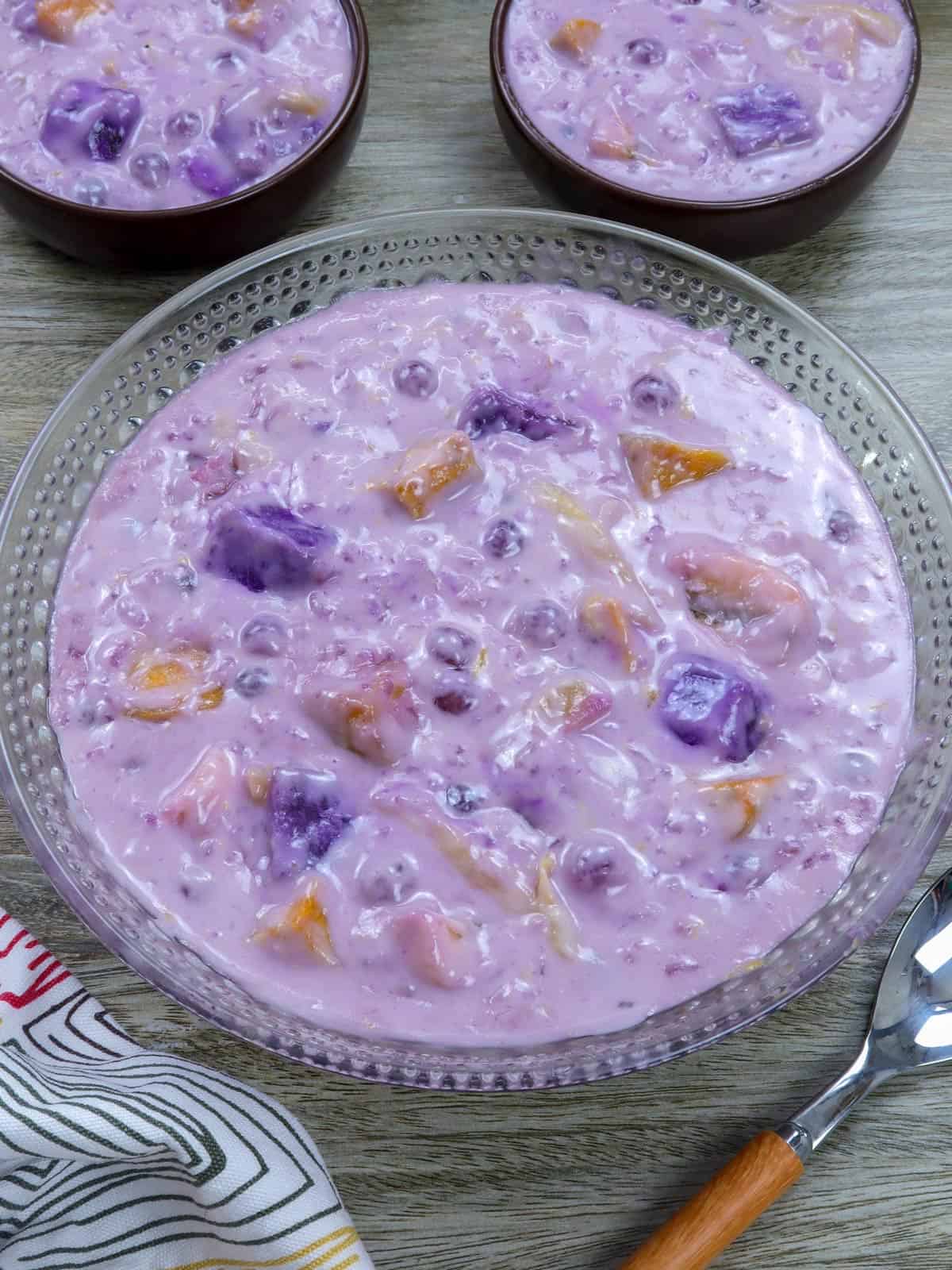
I chanced upon some fresh purple yams on my weekly grocery shopping at Seafood City a few days ago. As these tubers are rarely available, I thought I'd take the opportunity to make binignit.
And, oh boy, was I glad I did! The sweet coconut soup dessert turned out so good; I couldn't stop eating bowlful after bowlful throughout the day!
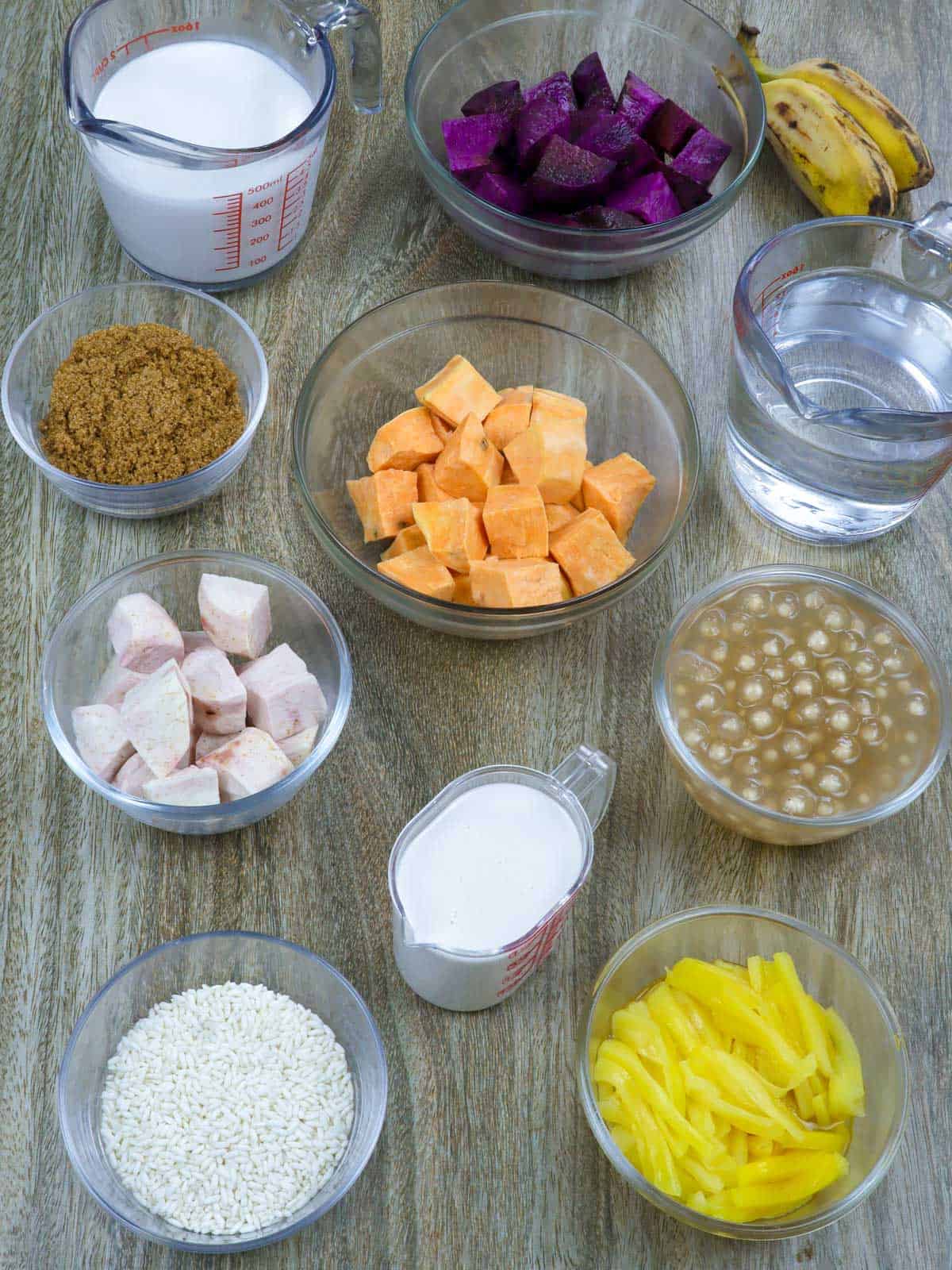
What is Binignit
Binignit is a type of rice gruel popular in the Visayan region. It's served either hot or cold and enjoyed as a dessert or midday snack. It's a filling meal during Holy Week, especially on Good Friday, when Catholics fast and refrain from meat.
Although similar to ginataang halo-halo in preparation and using coconut milk, tubers, saba bananas, sago pearls, and jackfruit, it traditionally includes landang, a palm flour jelly balls made from the buli tree. It also uses milled glutinous rice (malagkit) instead of sticky rice balls or bilo-bilo and muscovado sugar for its distinct flavor.
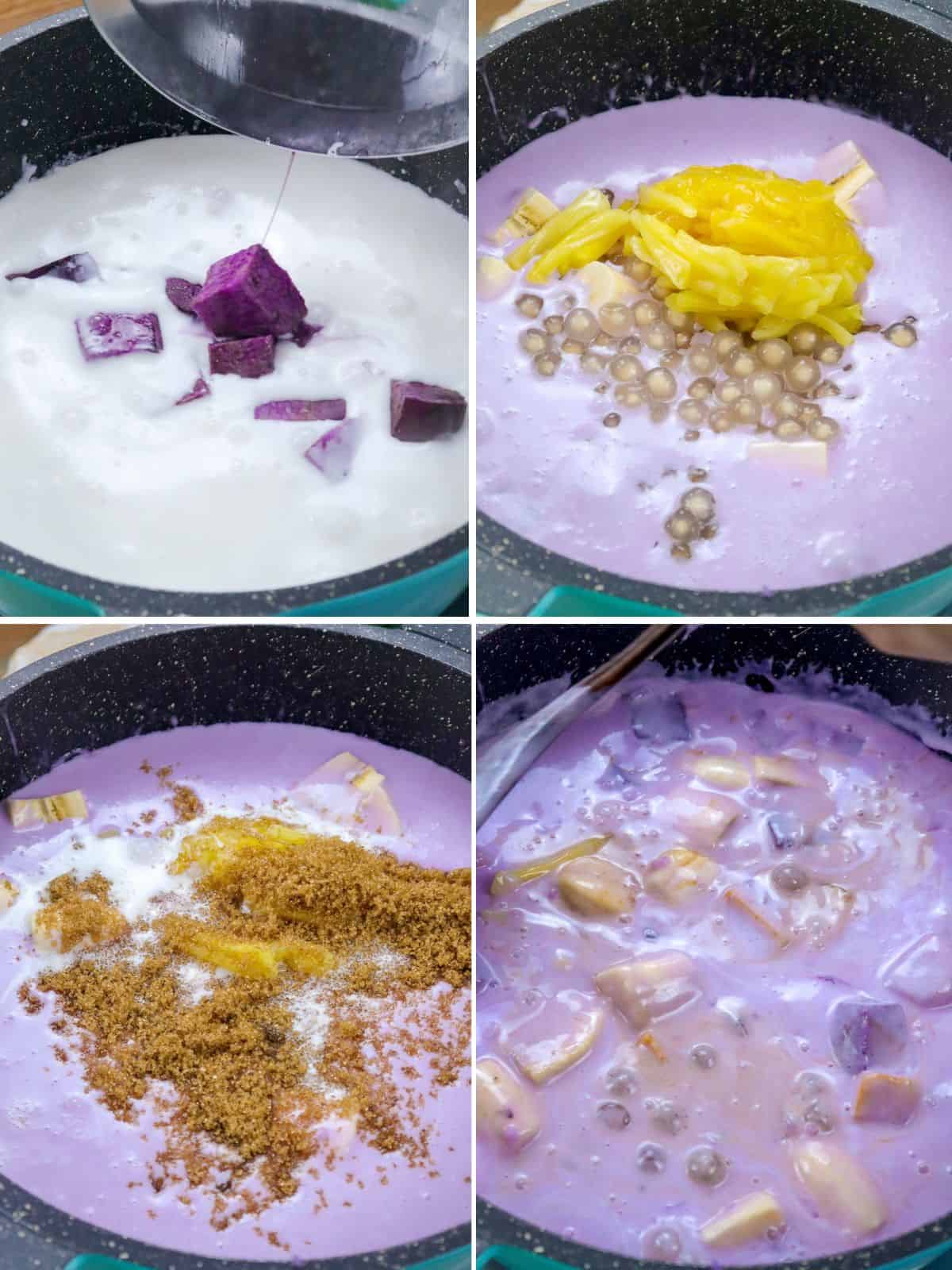
Cooking tips
- Cut ingredients in uniform sizes for even cooking.
- Ready-to-eat sago in the US comes bottled in heavy syrup. Make sure to drain them well lest the stew becomes overly sweet. If you want to use the dry pearls, you can read my tutorial on how to cook them.
- Cook the coconut sauce in a gentle simmer and do not bring to a boil to keep from curdling or separating.
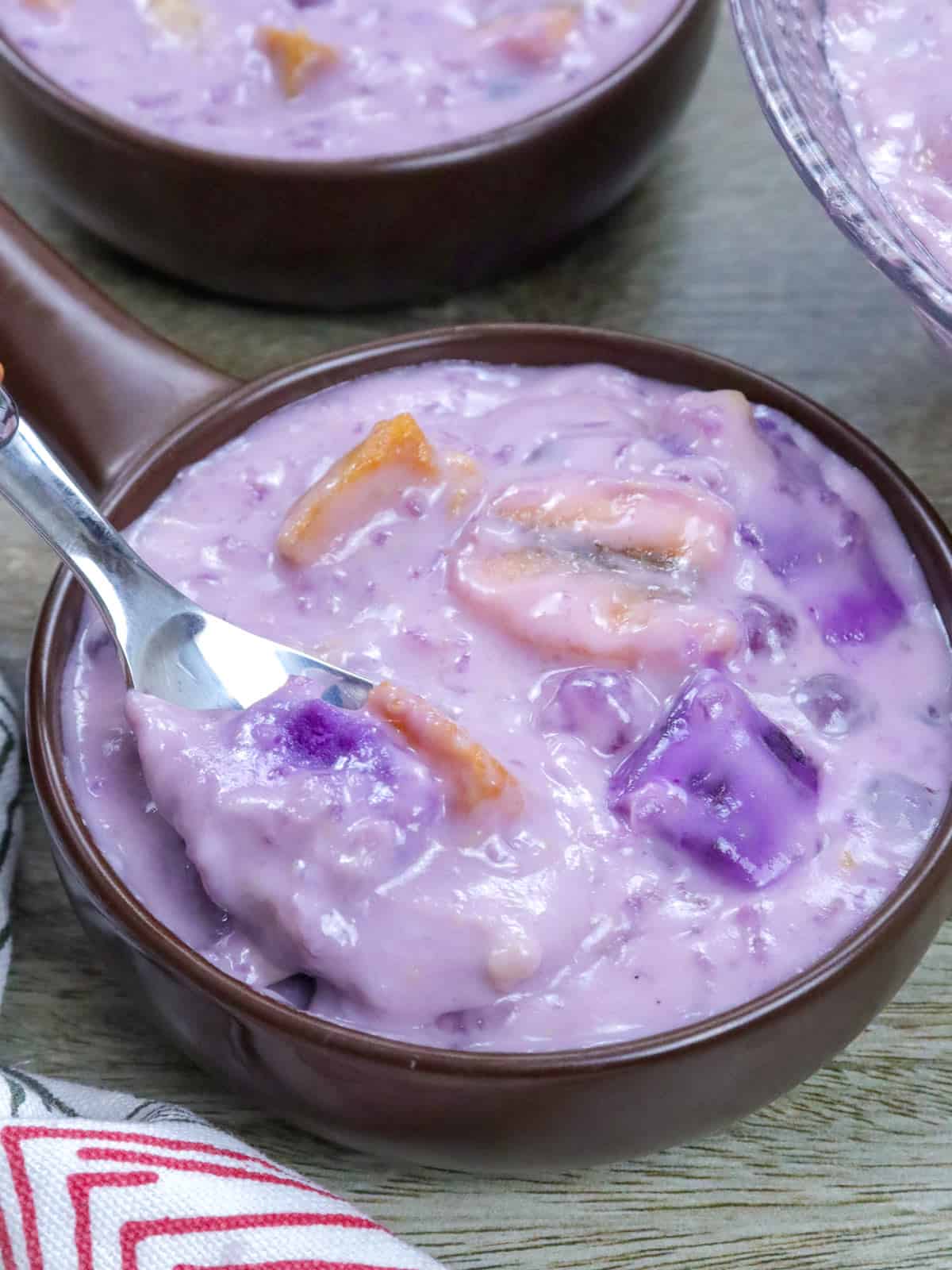
Storage and reheating instructions
- Store leftovers in an airtight container; they'll keep in the refrigerator for up to 3 days. You can freeze for months, but the fruits turn mushy when frozen and thawed.
- Serve cold or warm up in a saucepan over medium heat. Add coconut milk or water to loosen the consistency.
More ginataan recipes
Ingredients
- 3 cans (13.5 ounces each) coconut milk
- 2 cups water
- ½ cup glutinous rice
- 1 cup gabi, peeled and cut into 1-inch cubes
- 2 cups purple yam, peeled and cut into 1-inch cubes
- 2 cups kamote, peeled and cut into 1-inch cubes
- 2 saba bananas, peeled and cubed
- 1 cup cooked sago
- 1 cup jackfruit strips
- 1 cup coconut cream
- ½ cup muscovado or brown sugar
Instructions
- In a pot over medium heat, combine coconut milk and water. Bring to a simmer.
- Add glutinous rice and cook, stirring occasionally, for about 10 to 15 minutes.
- Add gabi, purple yams and kamote. Cook, stirring occasionally, for about 15 to 20 minutes or until tender.
- Add bananas, sago, jackfruit, coconut cream, and sugar. Stir to combine.
- Continue to cook for about 8 to 10 minutes or until rice, tubers, and fruits are completely cooked and liquid begins to thicken.
- Serve hot or cold.
Notes
- Cut ingredients in uniform sizes for even cooking.
- Ready-to-eat sago in the US comes bottled in heavy syrup. Make sure to drain them well lest the stew becomes overly sweet.
- Cook the coconut sauce in a gentle simmer and do not bring to a boil to keep from curdling or separating.
Video

Nutrition Information
“This website provides approximate nutrition information for convenience and as a courtesy only. Nutrition data is gathered primarily from the USDA Food Composition Database, whenever available, or otherwise other online calculators.”

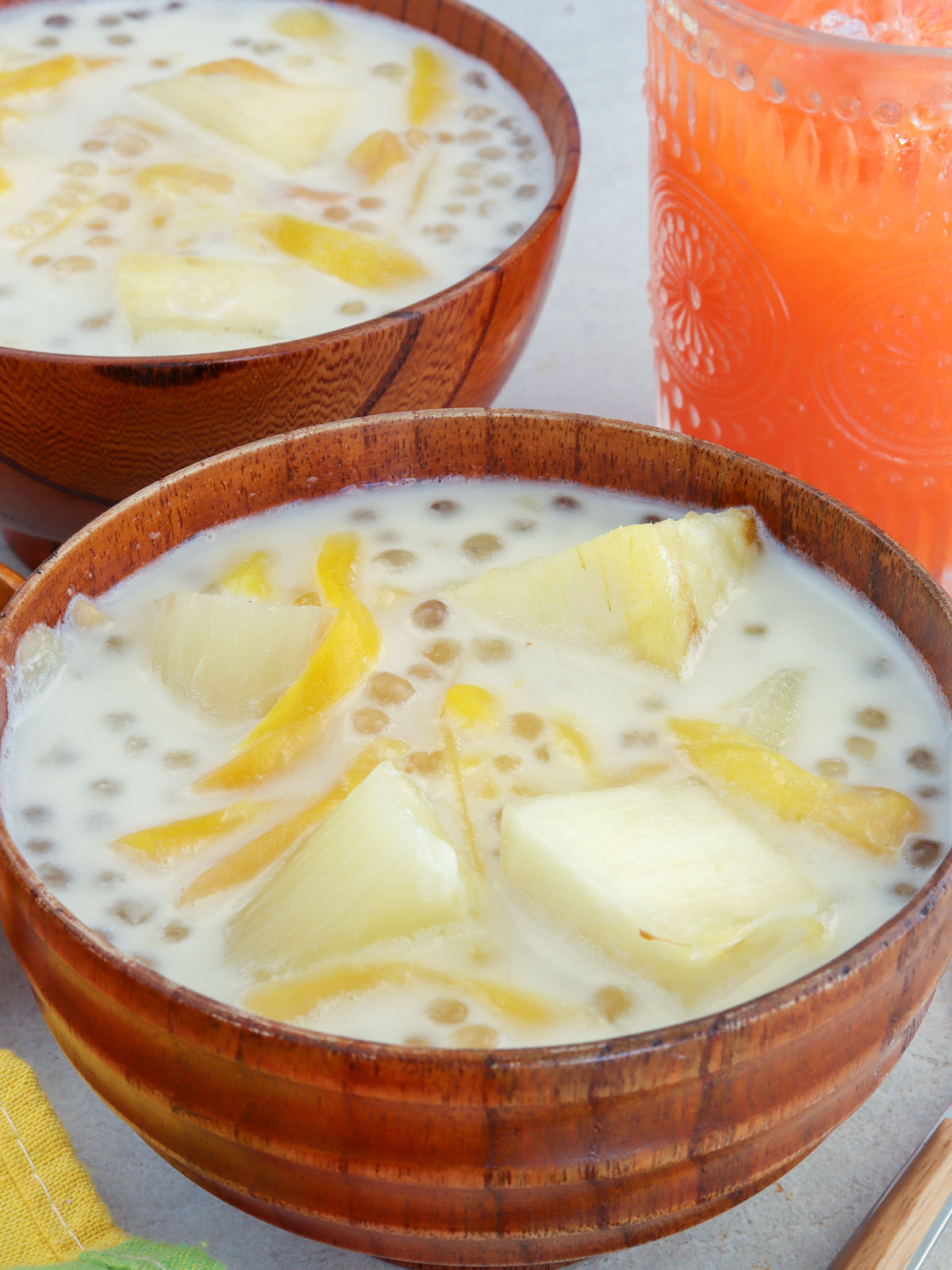
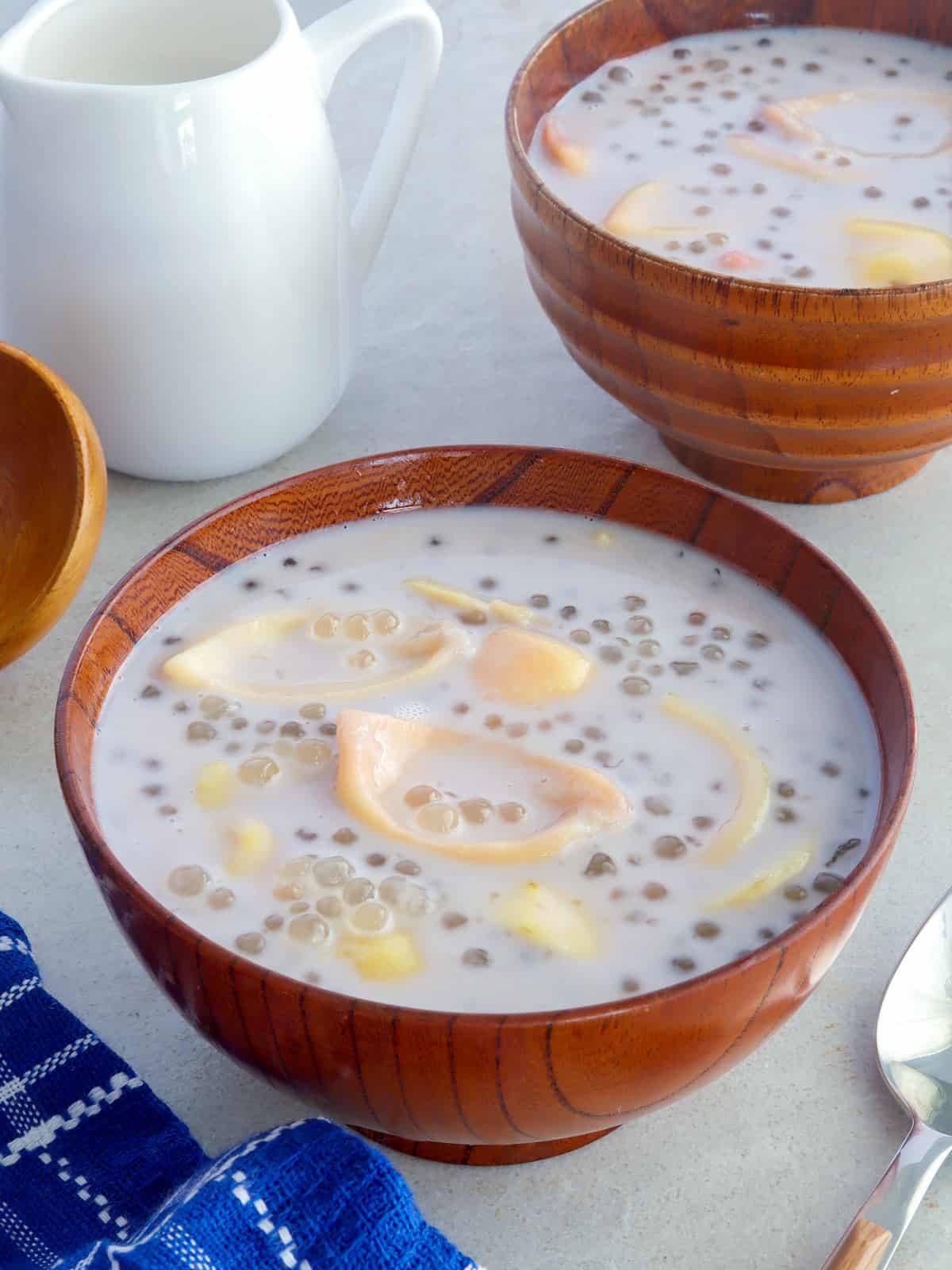
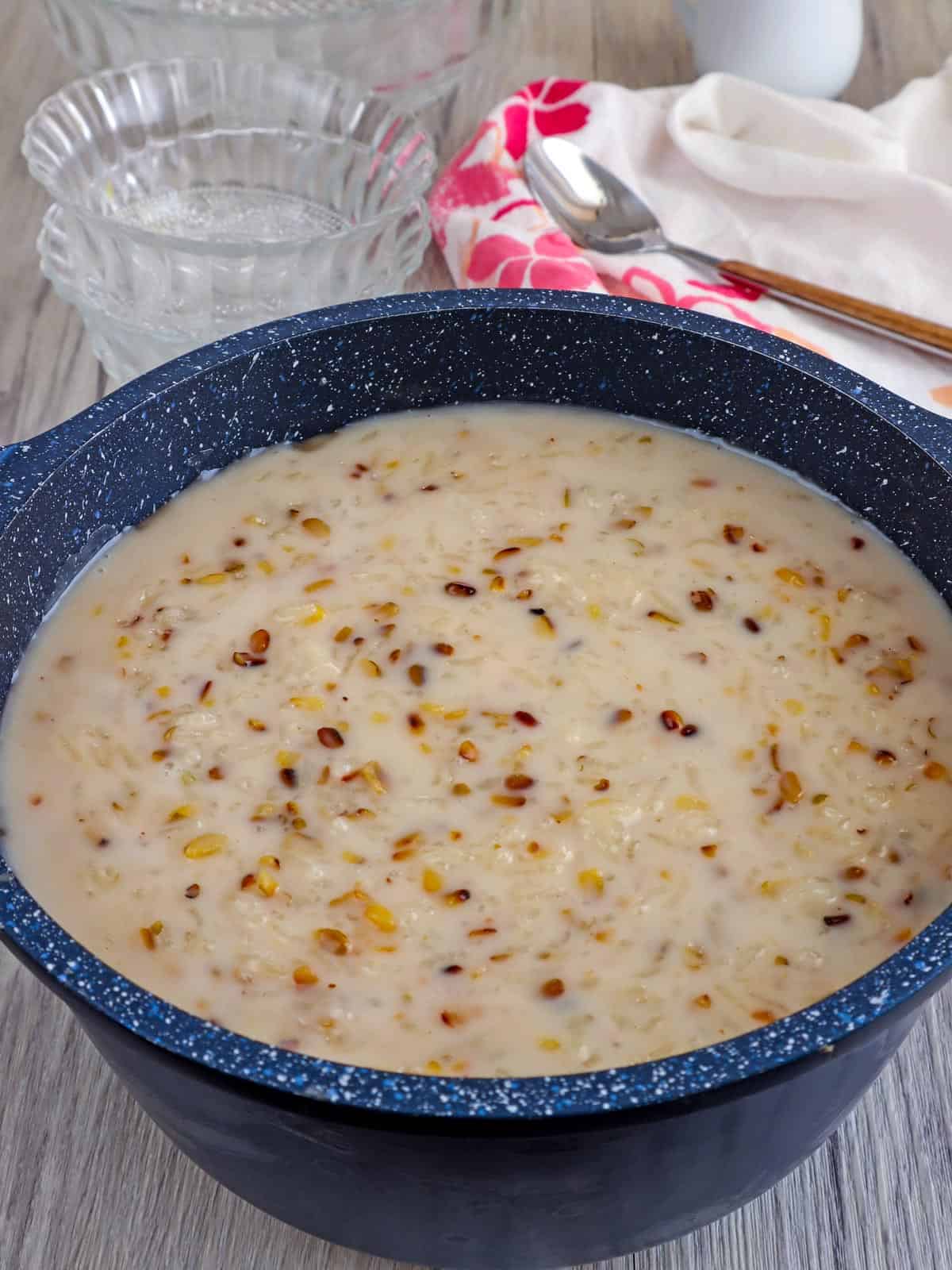
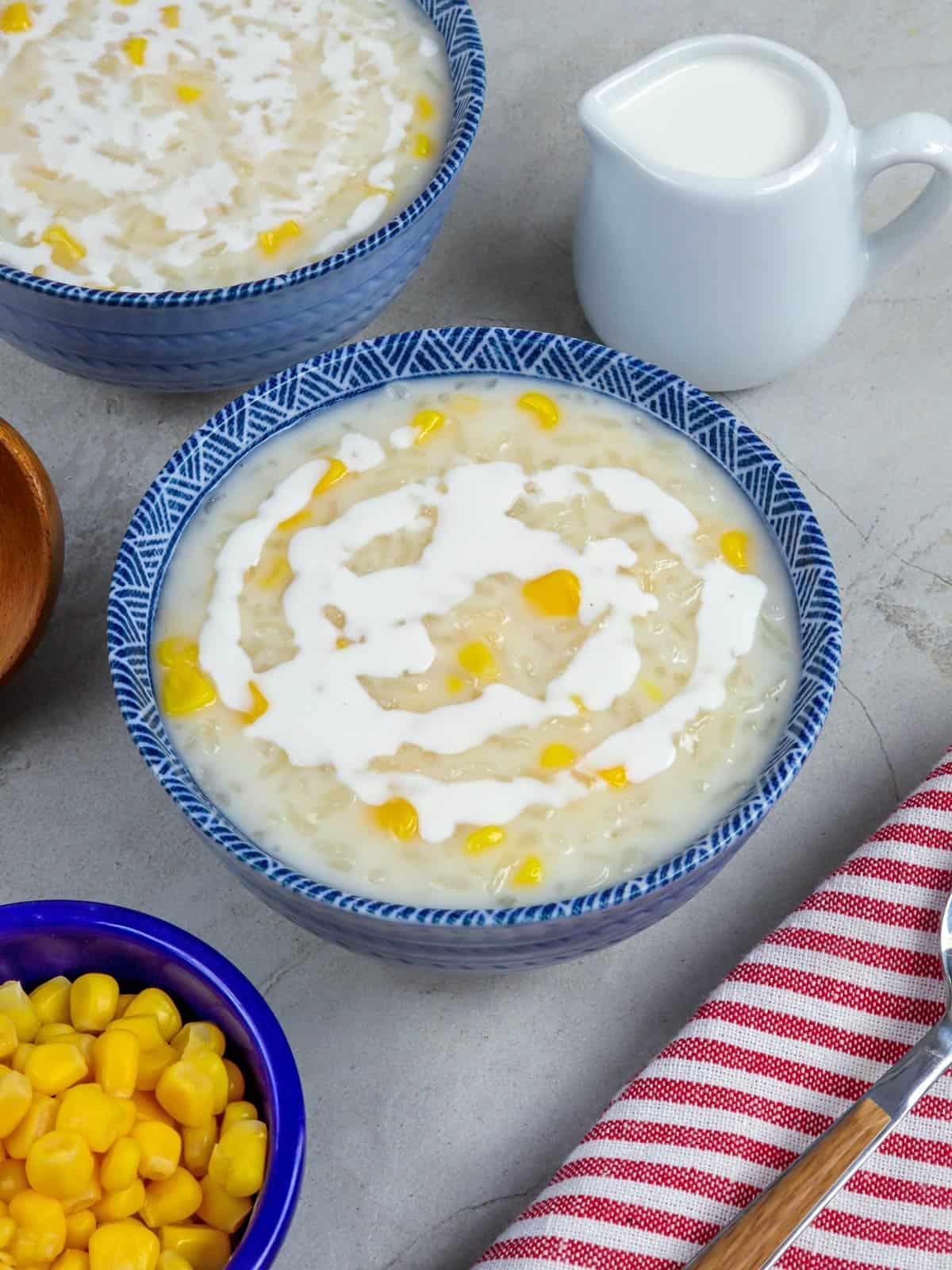
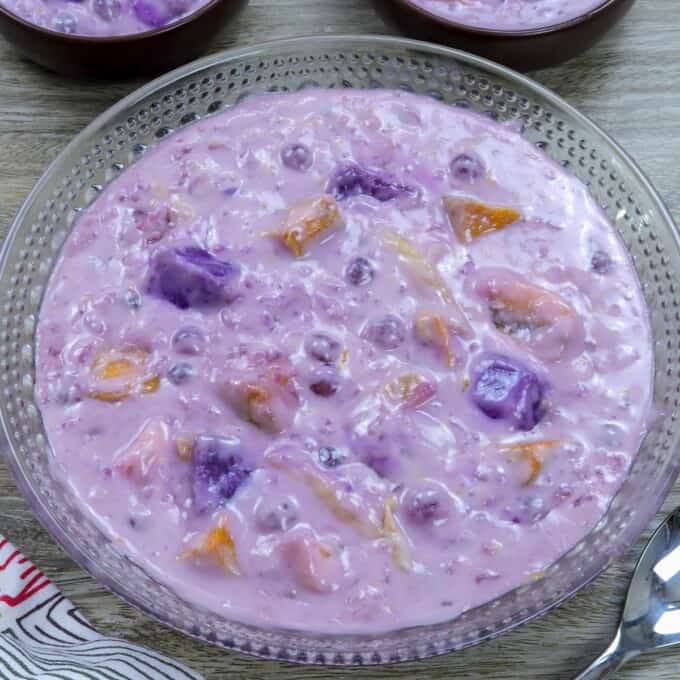

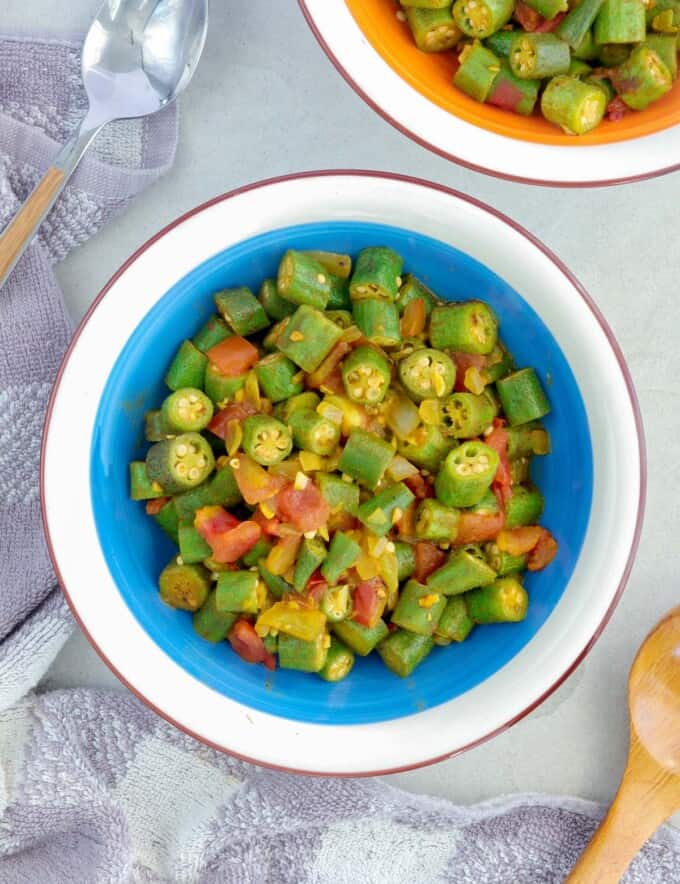
Miel Ubalde says
I'm super duper amazed by how simply cooking binignit is like.I'm a beginner and this helps me a lot in my cooking serye. Call me Miel the Kitchen Explorer. Char. Thank you so much!
Lucille says
Hi Lalaine,
How do you cook the dried sago? I have ripe saba bananas and will make binignit this week.
Thank you,
Lucille
Glen says
Main ingredient for Binignit is what we called LANDANG, glutinous rice or plain rice was just an option.
Vaebs Hasal says
Thank you very much for your amazing recipe I've tried some recipes and it works well for me. Thx Lalaine
Lalaine says
You're welcome, I am glad you enjoyed it 🙂